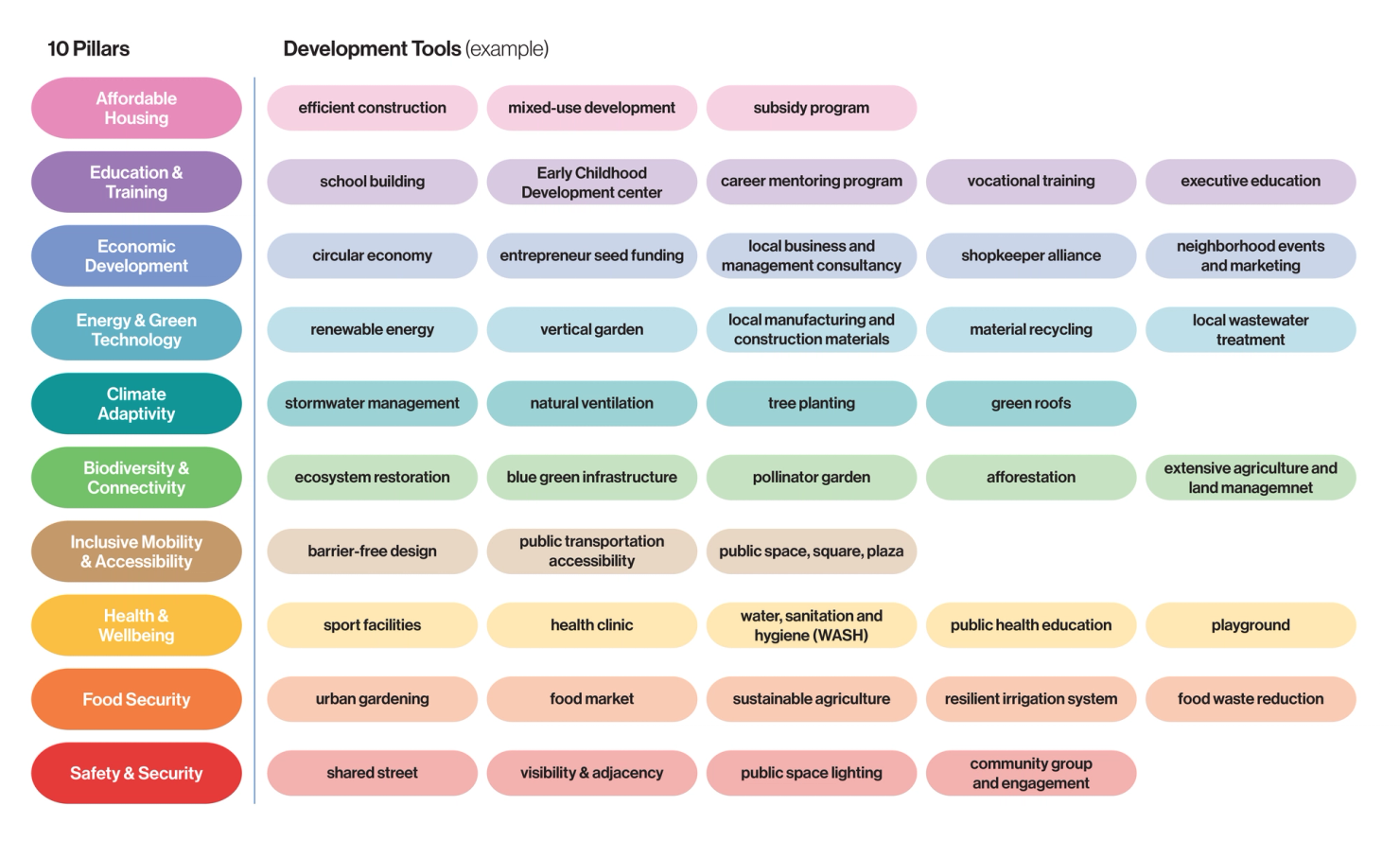How we work
Our Mission
We work with communities in under-resourced areas to enable sustainable neighborhood development, establishing a basis for long-term wellbeing, inclusive growth, and social and environmental resilience.
With the ISD, we aim to contribute meaningfully to some of the most pressing global challenges. These challenges include simultaneously social, political, economic, and environmental dimensions: from widening inequality to the climate crisis. Their speed of unfolding in increasing scales and intensities is not being matched, however, by a necessary shift in the way development projects are conceived, designed, financed, and delivered. In short, there is a gap between the ambition of the Sustainable Development Goals and on-the-ground realities in vulnerable and rapidly transforming societies. We work deliberately in this gap to test the viability of new approaches and shape the conditions for market-based actors to ‘build better.’
In our work, we follow a holistic approach that brings together multiple sets of stakeholders, operating across disciplinary boundaries. We work towards integrated solutions that align with the specific socio-cultural as well as ecological context of the place. We work closely with local communities and ensure that they have a seat at the table from conceptualization to implementation. We facilitate strategic partnerships and investments to provide the necessary technical expertise and resources. Together, we aim to accelerate patterns of sustainable development and create replicable models that are able to be adapted and applied in a range of contexts.

Integrated sustainable development brings environmental, social, and economic needs into balance.

We move from an unbalanced business model where stakeholders act in siloes to an integrated development model of equal stakeholder engagement.

The Resilient Neighborhood Model
The ISD’s Resilient Neighborhood Model is a proven development process aligned with the UN Sustainable Development Goals.
10 Pillars of Holistic Development
The Resilient Neighborhood Model is based on ten pillars addressing social, economic, and environmental dimensions. All our projects aim to improve these ten interdependent topics in different ways, responding to the specific context. This multidimensional mode of working guides each project and allows for flexibility in reacting to changing circumstances.
Resiliency and Adaptivity
The ISD’s holistic planning approach is based on the belief that a neighborhood is robust, healthy, and resilient to various dynamic threats if it consists of multiple dimensions that are addressed and strengthened simultaneously. They can balance and complement each other, allowing the neighborhood to adapt to changing and often unpredictable conditions.


The ISD Development Toolbox
The Ten Pillars model is applied in different constellations in each project, depending on the specific context, opportunities, and community needs.

Flexibility and Modularity
While each project initially considers all ten pillars, priorities vary depending on the context. This holistic approach allows to react to site-specific conditions and community needs with dynamic and effective implementation of development tools.
Different Sets of Stakeholders
Working across multiple dimensions offers opportunities for a growing network of partners to participate and collaborate on ISD’s projects.
Initiating a Process
Pillars are implemented strategically to allow society, the environment, and the economy to emerge and thrive as self-organized and robust systems.

How our projects are organized
For each of our projects, we assemble an interdisciplinary team of partners from our growing pool of collaborators.
At ISD, we act as project facilitators. External funding allows us to assemble and lead a project-specific planning team from preliminary research and development economics to site design and implementation. Our process and involvement in project delivery capacity always emerge through a strong collaboration with both regional and international experts and a deep engagement with the local community. This increases the ability of local stakeholders to deliver projects aligned with the UN Sustainable Development Goals.

Creating knowledge through practice and research
Our projects, located in different geographic contexts, result in the design and implementation of physical infrastructure. Simultaneously, the process of project development leads to applied research that is scientifically documented and disseminated locally and internationally.
ISD’s projects are executed through two branches: project development and applied research. These branches operate in parallel and constantly inform each other.
Generating Data Through Projects to Learn Over Time
This model offers opportunities for stakeholders to get involved and collaborate on multiple levels, generating impactful results through built projects and applied knowledge. Over time, the systematic assessment of ISD’s multidisciplinary projects, including successes and failures, allows the development of a growing catalog of best practices.
Sharing Knowledge With a Growing Network of Research Partners
Through deep engagement with local communities and complex socio-environmental systems in different geographic locations, as well as project implementation in parallel with applied research, we build a network of multiple stakeholders, including various educational and research institutions.
Hosting an Annual Symposium to Disseminate Lessons Learned
ISD aims to facilitate and host an annual symposium. This series of events offers a platform to bring together international groups of project partners from research and practice to share academic and practical knowledge. This fosters a culture of continuous learning and growth, aiming to continuously improve neighborhood developments in under-resourced places, aligning with the United Nations’ Sustainable Development Goals.
